Resources
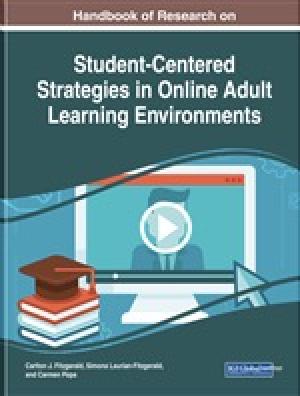
Adult learners are different than younger learners. These groups do, however, share some interests and learning similarities; for instance, both are motivated to use technology in learning. Yet adult learners often have additional challenges using technology because of their late involvement with the digital world. Older adult learners’ participation in online learning and continuing education pose institutional, situational, and dispositional challenges. Online learning provides particular possibilities for adult learners, thereby allowing them to cope with specific adult learning demands. It helps adult students to maintain some sustainability while navigating new technological terrains. Adult learners may have particular learning issues and challenges arise from time to time. The Handbook of Research on Student-Centered Strategies in Online Adult Learning Environments was developed for educators who work with adult learners in online programs. It is a book primarily focused on helping teachers by offering specific ideas for working with students in online environments and serving as a guide for structuring learning experiences for people at different stages of development. The book comprises 22 chapters organized in four sections. Section 1, “Integrating Educational Practices into Online Learning,” provides insights into how educators can link natural learning tendencies in teaching to students’ learning. Furthermore, it highlights competency-based education and the position of student-centered online learning. Section 2, “Adult Learners and Learning,” discusses andragogy in relation to the transitions in knowledge acquisition, focusing on concepts of digital natives and digital immigrants. Discourse on preparing the efficient teacher in the age of information and communication technology is foregrounded in Section 3, “Professional Learning.” For instance, Chapter 14, “A Guide to Professional Learning for Secondary Mathematics Teachers,” explores the impact of a professional learning program on mathematics teachers’ self-efficacy. Section 4, “Student-Centeredness and Collaboration,” provides an overview of collaborative learning as well as student-centered online learning. This handbook also provides arguments on converting theoretical frameworks into practical work in an online classroom or any other digital context. The chapters are organized subsequently in a rational order, yet the reader can start with any chapter of potential interest. However, the discourse on neoliberalism, along with austerity, and their impact—on online education generally, and online adult education particularly—is absent. Furthermore, the counter-argument which debates that online learning should be accepted with much caution receives only 15 pages. Moreover, while Dan Patroc argues that insufficient non-verbal communication is a major drawback in online learning, non-verbal communication receives only one paragraph. Overall, the editors and authors provide a remarkable contribution to the literature on online adult education. Handbook of Research on Student-Centered Strategies in Online Adult Learning Environments is highly recommended for adult educators, online trainers, researchers, and policymakers.
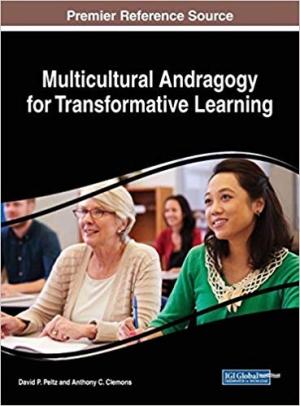
In the Foreword and the Introduction of Multicultural Andragogy for Transformative Learning, the editors lay out the goals and the structure of this multi-author volume. But the reader will not get past the first paragraph of the Forward before encountering one of many punctuation errors that plague the volume. In addition to multiple punctuation errors, some chapters contain so many spelling and phrasing errors that the reader is distracted from engaging with the content. Further, the quality of the research, the quality of the writing, and the author’s ability to support his/her assertions varies widely from chapter to chapter. The result is a collection of chapters that are very loosely connected, with little consistency in how each author engages with the intersection of multiculturalism, andragogy, and transformative learning. The volume is organized into three sections. The first provides the reader with the foundations for understanding the learning theories of andragogy and transformative learning and how both relate to culture. The second section examines andragogy and practice in a variety of cultural contexts. The final section describes “transformative multicultural andragogy” (xvii) in practice. While some chapters stand out as cogent and applicable, too many other chapters suffer from lack of editorial attention and guidance. The first section of the volume would most benefit from said guidance. Each chapter explains the theory of andragogy; many also describe transformative learning. Andragogy is also explained in detail in the Preface, making much (and in one case, most) of these initial chapters repetitive. Rather than re-explaining these theories, these chapters would be better spent connecting adult learning in various contexts to multiculturalism. Some of the chapters in sections two and three are valuable as stand-alone articles on their stated topics, but as a whole the chapters do not work together to enlighten the reader about multicultural andragogy as it relates to transformative learning. To be fair, the editors state that they “have set a broad scope for the theme” of exploring the intersection of culture, andragogy, and transformative learning (xx). However, only a few of the authors explore all three of these concepts. When a chapter in a volume is notable for addressing the stated topic of the volume, the scope of the volume is perhaps too broad. In the Preface and Conclusion, the authors state that “the primary focus of this text has been to elicit the connection between cultural perspectives and adult learning” (xxiv, 270), and in the Conclusion, they propose a new learning model representing the relationship between andragogy, transformation learning, and multiculturalism. What one would hope to learn from this volume is how they interact, not just that they do, so that the model can be tested and reproduced in an adult learning environment. The editors are correct that the relationships between these concepts should be explored and described, and that adult education would benefit from such work. However, Multicultural Andragogy for Transformative Learning lacks the focus and editorial oversight to accomplish that goal.
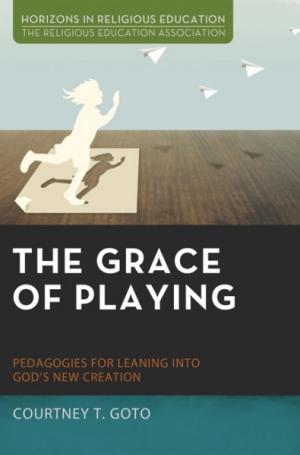
In The Grace of Playing, Courtney Goto offers a project in practical theology for Christian religious education that uses the notion of playing to better understand teaching and learning. Goto distinguishes her project from a formal practical theology of play, where play could be explored as a universal category of human existence. Instead, she works in the line of Paulo Freire’s search to move beyond a traditional schooling model of education towards learning that is more integrated, experiential, and creative. Specifically, Goto reflects critically on the notion of revelatory experiencing through the language and pedagogies of playing. Her focus is on playing as it relates to adult learning, and her investigation demonstrates – both conceptually and through case studies – how playing cultivates faith formation. Goto is an Assistant Professor of Religious Education at the Boston University School of Theology and a co-Director of the Center for Practical Theology. She writes as a third generation Japanese American United Methodist primarily for an audience of theorists, students, and practitioners who are liberal mainline Protestants. She invites Roman Catholic, Orthodox, and Charismatic Christians into the conversation as well, but notes that her advocacy of revelatory experiencing is to be understood in terms of the contextualized perspectives encountered in mainline Protestant churches. This is an important caveat. Theologically conservative readers will take issue with her concept of revelatory experiencing, whereby revelation happens in between persons as they relate to one another (as opposed to approaching Christian revelation as a totalizing meta-narrative). That Goto makes her theological liberalism so clear and defined, particularly in terms of her understanding of revelation, is a great service to readers. The Grace of Playing investigates playing from social scientific, theological, and historical perspectives and offers two case studies for application. After a preface and introduction, Chapter 2 explores psychoanalytical and psychological concepts of playing, relying particularly on D. W. Winnicott to articulate sociologically what occurs in revelatory experiencing. In Chapter 3, Goto turns to theology to build a theory and constructive proposal of play by appropriating insights from Jürgen Moltmann’s Theology of Play. Chapter 4 is a historical accounting of medieval practices of play, including the use of devotional dolls by fourteenth century nuns in the Rheinland, Germany and the practice of holy foolery by those in both Western and Eastern Church traditions. The final two chapters contain case studies of grace-filled play. The first describes the creation of a pretend garden at a Japanese American church for the purpose of congregational reconciliation, and the second briefly recounts a practice of playing with inmates in a juvenile detention center.To conclude, Goto demonstrates that the grace of playing leads a world in need towards God’s new creation. The Grace of Playing skillfully navigates insights from sociology, theology, and history to make a compelling case for the theological practice of play as a mediating, revelatory experience within Christian religious education. The book is readily accessible for students and practitioners, without neglecting the more technical needs of theorists. For the case studies, Goto deliberately refrains from providing much, if any, direct data; this effectively condenses the reading, but also leaves a sense of wanting to know more about how the grace of playing works itself into and through these unique settings. Overall, the book is a warm invitation for all to play in the fullness of God’s grace.
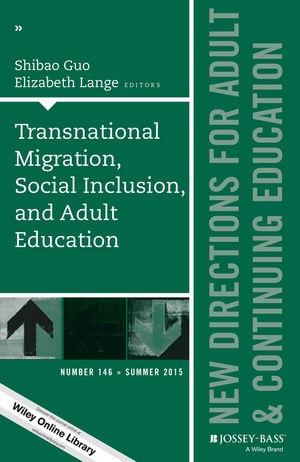
Adult education is an area of study and application that has helped bridge the gap between immigrant populations and the bureaucratic systems regulating said populations. This has been accomplished by implementing formal and informal training as well as collaborating with settlement services and other programs. Sadly, the bent of much of this training (specifically within Canada, the U.S., and Australia, in which this volume’s featured studies are located), was geared historically toward assimilating immigrants rather than integrating them into their host countries. Even today, the underlying narrative of immigration policy in these countries is highly colonial and assimilationist. This volume attempts to elucidate the key conflicts at work between immigrants, host countries’ policies, and service workers. Using Nancy Fraser’s theoretical constructs of redistributive, recognitive, and representational justice, the authors present solutions and insights into how adult education as a field can assist immigrants in challenging exploitation and influence policy towards a more socially just outcome. Applying Fraser’s theory to adult education, Shibao Guo defines recognitive adult education as one that “affirms cultural difference and diversity as positive and desireable assets” (15). This collection addresses the conflicting interests at work within immigration and education and points to possible ways adult educators and others can mitigate the negative realities that immigrants face. The topic of immigration is dense and multifaceted so thankfully the chapters are concise and accessible. Given that “the United Nations now estimates that 232 million of the world’s population lives outside the country of their birth,” transnational migration can no longer be ignored (2). One takeaway from this collection of nine chapters is that there is a marked disconnect between immigrants’ experiences and the policies created to regulate them. Immigrants face a myriad of challenges: the devaluation of foreign credentials, possible exploitation, racism, discrimination, heightened security policies of receiving countries, and broken bureaucratic systems. The nature of immigration has also changed. Shibao Guo provides a helpful description of how transnational migration is different from other types of migration by defining it as “multiple and circular migration across spaces of migrants who maintain close contact with their countries of origin” (7). This type of migration is a far cry from migration patterns of the nineteenth and twentieth centuries when migration was often described as “one way” and immigrants were expected to completely assimilate into the receiving country’s culture, leaving all traces of “foreignness” behind. Each of the chapters echo Shibao Guo’s call for adult education to “continue its long-standing commitment to social inclusion by working toward a more inclusive adult education squarely focused on the benefit of marginalized adult learners (e.g., workers, farmers, women, racialized minorities)” (8). The statistics reported are simply staggering. Bonnie L. Slade cites the Longitudinal Survey of Immigrants to Canada (LSIC), which reports that “although 76% of new immigrants have at least one type of international credential, such as a university degree, 70% experienced barriers in gaining access to the Canadian labor market at an appropriate level” (67). As Slade and others note, the devaluation of foreign creditials often leads to underemployment or unemployment, especially for immigrant women. Critically studying the language used in immigration policy and the theoretical position taken by policy makers may also assist adult educators in unpacking some of the undercurrents of racism and colonialism still at work in policy creation. As Edward Joaquin and Juanita Johnson-Bailey point out, the “issue of immigration has generally been cloaked in the language of patriotism and nationalism” (79). While overt racism and bias may be shunned in modern discourses around immigration “predjuice has become coded and wrapped in new, less offensive language and discussion” (80). Joaquin and Johnson-Bailey also suggest that adult education programs “adapt their curriculum to educate learners about transmigrational immigrant education concerns” as well as “infuse strategies that address the needs of immigrant students” (83). Yan Gao’s chapter on ESL programs in Canada illustates how some language programs have become mechanisms to create and control workers. Yan Gao suggests that adult educators in Canada “help immigrants develop critical language awareness” which will allow them to contest unfair practices (48). Perhaps one of the most promising avenues for change comes from Tara Gibb who suggests “inviting policymakers and employers into literacy classrooms and language classrooms so that they might observe firsthand alternative forms of assessment, view holistic respresentations of language and literacy practices, and listen to immigrants’ experiences and expressions of knowledge” (60). In these instances, adult educators are being called on to actively educate themselves, their students – immigrant and nonimmigrant alike – and policy makers on these issues. This collection provides an intriguing foray into the brave new world of immigration. It lends itself not only to adult educators who work with immigrants but also to those who do not. College faculty, administrators, and staff in the Global North would benefit from reading this volume because if transnational migration continues on its current trajectory, it will vastly change our institutional as well as national demographics.
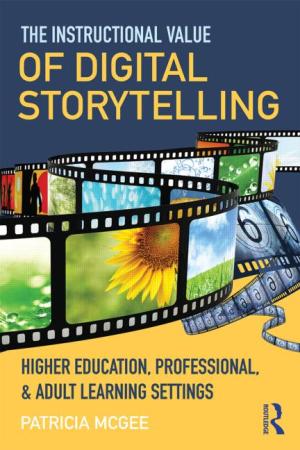
Digital Storytelling originated in the early 1990s in the matrix of what was then called “new media”: a mix of graphics, photography, videography, audio recording, and video and audio editing. As first developed at the Center for Digital Storytelling in California, workshop participants learned to create a two- to three-minute first-person story in a digital format that could be shared via the Internet. By 2000 when media production software became commonly available on personal computers, what had been the realm of professional artists and media producers became a potential playground where ordinary people of all ages could be empowered to craft and to share digitally a succinct, poignant, brief first-person video story. Since then, this form of storytelling has found advocates around the world: in small villages in Wales; in schools from elementary to college-level in the U.S.; in museum art programs in Australia; and in social service and social justice organizations in the U.S., Africa, and elsewhere; and in youth faith formation in Norway and Denmark. Major universities now offer education courses in this method, from the University of Cardiff in Wales to the University of Hawaii. ESL teachers have successfully employed this technique to help immigrants tell their stories. PhD students have written dissertations that explore the evolution and application of Digital Storytelling in a variety of settings, and media and cultural studies scholars have analyzed this phenomenon as it has been introduced in multiple cultures. While the original short format is referred to with initial capital letters, the wider field of digital media storytelling has evolved and now takes many forms. Patricia McGee has carved out a portion of this diverse world of digital storytelling and limited her comments to “Higher Education, Professional, and Adult Learning Settings,” which is still a very wide scope. She divides this well-researched work into three sections that provide excellent overviews of past storytelling traditions and new twenty-first century approaches; current institutional uses and emerging models for digital storytelling; and applications in diverse cultural and institutional contexts. She advises readers to turn to whichever section they find of most interest. Theological educators and religious studies professors will most benefit from exploring the third section on applications. With a little imagination, they can envision how the digital storytelling examples McGee cites can be translated for application in their classrooms and how their ministry students and graduates can use digital storytelling in youth ministry, faith formation, catechumenal processes, new members gatherings, church building transitions and anniversaries, and church websites. McGee, Associate Professor of Digital Learning Design at the University of Texas at San Antonio, is evidently a master of her wide-ranging, fast-evolving field. She is a good guide, one who will stretch the vision of theological and religious studies educators. By introducing this creative, communal digital storytelling process in their classrooms, their students can learn to empower themselves and others to claim their voice.
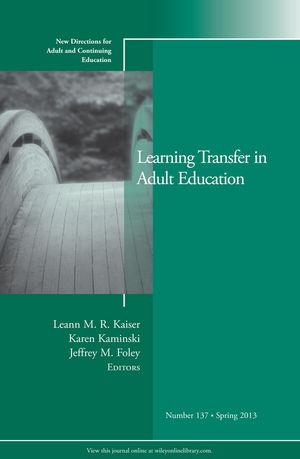
Learning Transfer in Adult Education (New Directions for Adult and Continuing Education, Number 137)
Leann M. R. Kaiser, Karen Kaminski, and Jeffrey M. Foley’s edited volume Learning Transfer in Adult Education offers a concise and readable entry point into the topic of learning transfer. While the stated focus of the volume is adult education, many of the themes and strategies considered will be of interest to those teaching traditional undergraduates as well. According to the editors, “Learning transfer, simply stated, is the ability of a learner to apply skills and knowledge learned in one situation or setting to another” (1). This goal, they suggest, is fundamental to any educational enterprise. In the first chapter, Foley and Kaiser introduce learning transfer and concepts associated with it, providing a useful framing for the chapters that follow. In particular, Foley and Kaiser explain the distinction between “near transfer,” in which the new situation closely resembles the original learning context, and “far transfer,” in which it does not. These and a handful of other key terms reappear throughout the essays; this chapter deserves a careful reading. The chapter also offers a brief overview of some tools available to instructors, many of which reappear or are discussed in greater detail in later chapters. Chapters 2 through 7 offer a variety of perspectives. Nate Furman and Jim Sibthorp (chapter 2) consider experiential learning techniques. These include problem-based learning, project-based learning, cooperative learning, service learning, and reflective learning. Three strong case studies are offered in this chapter, which help demonstrate the techniques in action. One of the techniques, problem-based learning (PBL), is the focus of the contribution by Woei Hung (chapter 3). Hung introduces the distinction between “well-structured” and “ill-structured” problems; the latter are more commonly found in the workplace and thus are productively used in PBL. Hung also comments on the cognitive processes that underlie effective learning transfer; these are complemented nicely by Jacqueline McGinty, Jean Radin, and Karen Kaminski’s study of “Brain-Friendly Teaching” (chapter 5). As the phrase “brain-friendly” suggests, the chapter skews toward pop psychology, but many of the techniques seem to hold potential. Patricia L. Hardré’s contribution (chapter 4), meanwhile, offers a serious engagement with the question of authenticity as it plays out in technology design. The remaining two case studies take up broader concerns. Rosemary Closson (chapter 6) offers a nuanced review of issues surrounding race and cultural difference in learning transfer, combining theoretical and practical discussion. This chapter is especially valuable for instructors interested in race, cultural difference, and pedagogy. Jeani C. Young (chapter 7) offers an equally sensitive treatment of personal change. The volume concludes with a discussion by the editors on “applying transfer in practice.” While those teaching adult learners will especially benefit from the specific examples and case studies, all interested readers stand to profit from this volume. In particular, its wealth of practical examples and classroom strategies offer quick and immediate value to the busy reader.
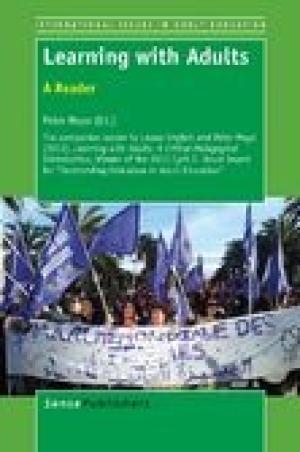
Learning with Adults begins with the following assumption: adult learning is central to the flourishing of a democracy, a democratic world, and practices of justice and peace. The volume borrows the foundations of Paulo Freire, Jürgen Habermas, John Dewey, Theodor Adorno, Jack Mezirow, and other critical theorists and democratically-minded educators and philosophers to develop a substantial discourse around adult learning. This volume is a companion to the original, Learning with Adults: A Critical Pedagogical Introduction (2012, Sense Publications) and is volume 13 in a series committed to the expanding field of adult learning centered in emancipatory, democratic, and critical studies. This second volume developed as a multi-authored extension of the initial volume. The authors of the initial volume understood that more work needed to be completed around adult learning as it relates to sexual orientation, disability, literacy, and consumer rights. The authors extended this initial plan to include chapters on relating adult education to poverty, libraries as learning sites, social creation, aesthetics, and media. Unlike traditional reader-companion volumes, this reader does not provide the foundational texts for the initial volume but provides amplifying essays brought together by contemporary authorities in adult learning and outside scholars, including Zygmunt Bauman. This is an interesting collection as it lays out essays toward an emancipatory vision for adult learning and away from the consumerist or compliance categories of training and education. The volume has five parts, beginning with the learning society and moving through questions of identity, instruments of practice, and learning in everyday life. The final section is on policy and context, which connects to an important literature on citizenship education for adult learners. The volume makes a contribution to the definition and scope of adult learning. In sum, adult learning, throughout the volume, is best understood from Oscar Negt. In his essay, “Adult Education and European identity,” he says adult learning is “learning processes that are determined by people’s own interests and horizons of perception, so that general relationships are made comprehensible” (126). The assumption throughout the volume is that adult learning is dynamic and that the methods, processes, and outcomes constantly shift as people’s own interests and horizons of perceptions shift. D.W. Livingstone outlines how adult learning that is emancipatory extends the scope of education and reverses the trend that “we may becoming increasingly willfully ignorant societies rather than learning ones” (33). Each of the chapters offers models for adult learning, some better than others, to increase critical thinking and to challenge societal norms. Several of the essays highlight the social inequality evident in access to formal education and claim that social and economic class status continue to be roadblocks in granting access to transformational learning. Adult learning, for these authors, is an invitational practice for all people and is, in itself, emancipatory. The authors continually highlight how the history of education (à la Meyers [1960] and Smith [1955]) is in need of ongoing critique if education, specifically adult education, is going to move beyond compliance and consumerist practices. These essays press against dominant ideologies, namely that “the dominant tendency in contemporary thought has been to equate learning with the provision of learning opportunities in settings organized by institutional authorities and led by teachers approved by these authorities” (37). Adult education has rarely moved beyond this dominant trend and has mostly accentuated it, which limits transformative learning for marginalized adult communities. The essays engage in a clear critique while also offering models for emancipatory and transformational adult learning processes (see Livingston’s and Cranton’s chapters). These models are the take away gifts from the volume. The models fall into three categories. The first set of models are site-based learning models, where the locations of everyday life are taken up as locations for learning. The second set of models arise from within the institutionalized practices of societies, where social and economic practices invite critical questions and transformative learning opportunities; and the third model is rooted in the ideologies of good education, namely processes to enact justice and peace. Overall, the volume holds education for adults as a learning paradigm for its own consideration. The site-based learning discussion recognizes that learning spaces are most often beyond the classroom and are found in the student’s everyday experiences. However, adult education that occurs in a classroom then becomes, itself, a site of the everyday experience. Additionally, this volume is a model for how the liberal arts tradition is a common practice in adult learning, whereby multiple disciplines make intersections around a common question. There is broad range of voices from education, philosophy, economics, sociology, and elsewhere included, yet all are committed to common questions of lifelong adult learning. Finally, the volume in itself is an adult learning model; the renaissance feel to the book results in unexpected points of informational learning for the reader. For example, on the topic of capitalism’s impact on the labor force and access to education, D.W. Lingston highlights that in 1983 only 28 percent of workers needed a college degree; by 2004 this figure rose to 45 percent. What is important is that over this same time period, degree attainment increased from 22 percent (of the population) to 54 percent, which is an increase of 34 percent (46). The data assists the reader in understanding how formalized processes of education result in trends toward underemployment. The point of information locates the implications of economics on the practice and process of adult learning. The volume, however, falls short of expectations. I was expecting the inclusion of several foundational texts in relationship to the field of adult learning. Also, several of the essays trail away from the central argument around learning with adults into diatribes on the respective intellectual agendas of each author; this is both a gift and burden. Each of the diatribes is not unimportant yet limits the volume’s coherence toward detailing models and processes for adult education amidst diverse populations. The positive aspect of this is mentioned above. I recommend this volume to curious readers. Learning with Adults assists its readers in understanding the complexities of learning with adults and makes clear that the field of adult learning is underdeveloped and misunderstood when connected to the traditional avenues of education. If a reader is looking for a more basic and invitational text on the topic of adult learning, I recommend purchasing the first volume in this series (English and Mayo, Learning With Adults: A Critical Pedagogical Introduction, 2012).
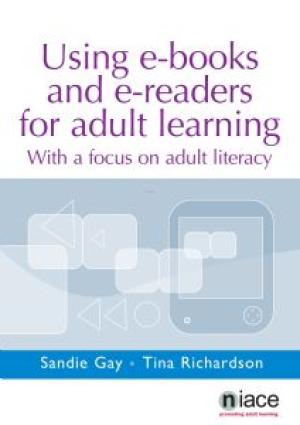
The role of e-books in higher education continues to evolve. E-book sales rise steadily, as publishers and libraries explore the use of e-books in academia. Students and faculty, however, are often reluctant to embrace e-books for academic purposes. College and seminary educators seeking to discern the value of e-books and their role in higher education need guidance and insight. Unfortunately, Using e-Books and e-Readers for Adult Learning does not contribute significantly to that discussion. Written by an e-learning specialist and an educational program manager at Staffordshire University, the book articulates its purpose clearly: “to provide a guide on what different e-reading devices and e-books can offer the learner for the advancement of their learning, and to outline some of the issues and challenges that come with using them in the adult classroom” (1). These issues, however, are overshadowed by a considerable amount of how-to material that detracts from the more substantive discussion. The first three chapters address various aspects of e-book technology (for example, e-readers, digital rights management, and accessibility issues). Such introduction to the broad e-book landscape could prove useful, but these pages are dominated by tables, screen-shots, and technical minutiae (like screen orientation and battery life). Where the authors provide tips for classroom integration, these are subordinate to technical details. Anyone already familiar with e-books is likely to skim past this elementary material and overlook the tips. The next two chapters consider research on e-books in teaching, summarizing published studies and the authors’ own action research. This material is interesting, but would benefit from more synthesis and analysis of findings across the studies. The final chapters and conclusion discuss implementing e-book programs, offer tips for classroom use, and look toward the future of e-books in teaching and learning. (While directed toward adult literacy and diverse learning needs, some of these insights might transfer well to teaching theology and religion.) These chapters address the work’s stated goals and broach interesting theoretical considerations, but unfortunately this is the slimmest section of the book. The volume concludes with a glossary, web-resources, and an appendix detailing software and hardware aspects of different e-readers. Sadly, as is often the case when discussing technology, the material is already obsolete. Gay and Richardson are clearly knowledgeable regarding the value of e-books for adult literacy, but Using e-Books and e-Readers for Adult Learning is dominated by elementary technical matters. The book would benefit from attention to the substantive issues, by offering a thorough synthesis of research, spending more time discussing how e-books can serve different learners, and relegating technical how-to information to appendices. This does not mean the work should be awash in educational theory, but more attention to “so what?” questions would have been welcome. To some degree, the title suggests what the content does not deliver. This work serves as a detailed introduction to e-books for adult literacy teachers and programs, but its elementary character dilutes its value and restricts its potential for other settings.